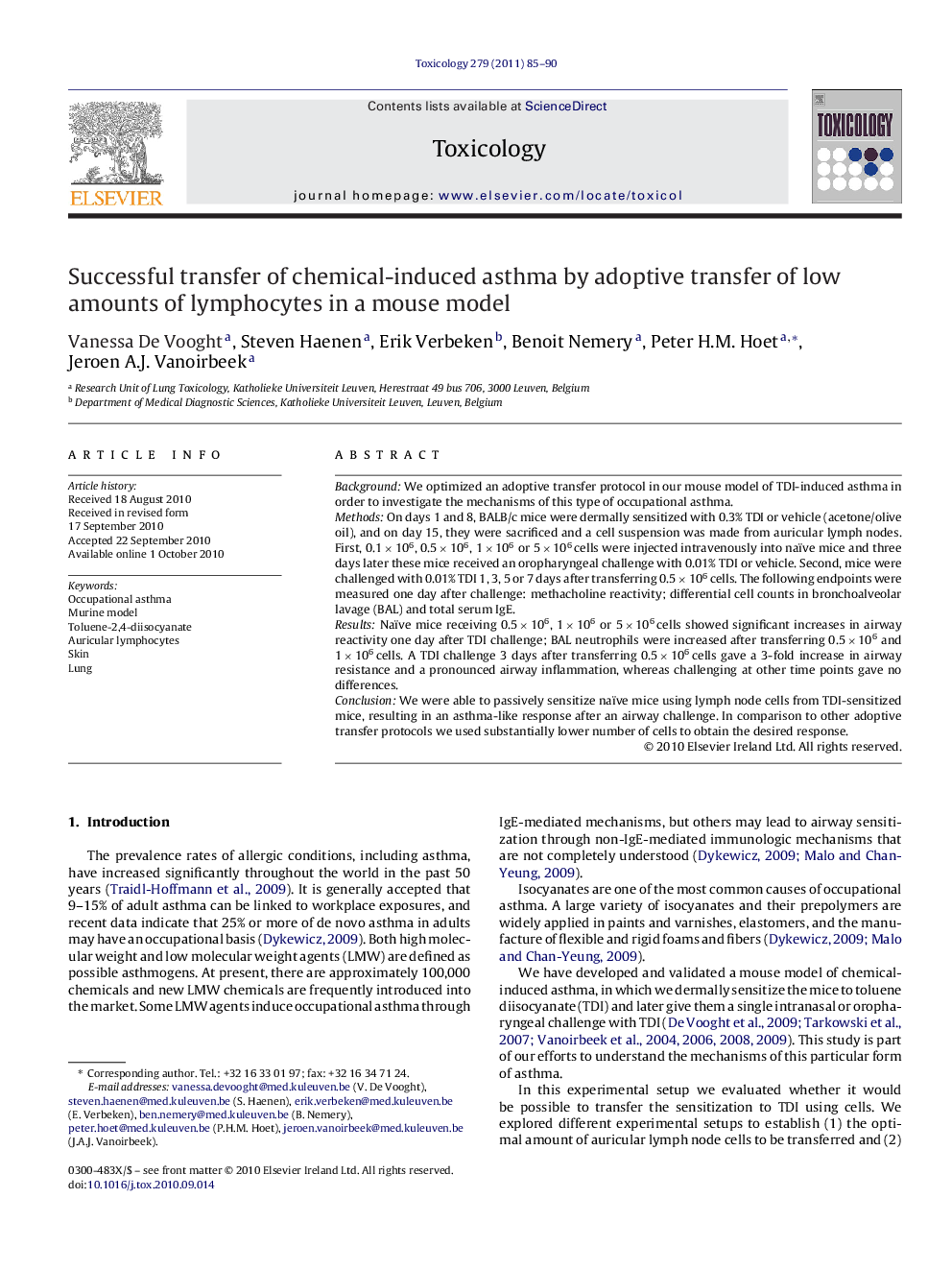| Article ID | Journal | Published Year | Pages | File Type |
|---|---|---|---|---|
| 2596086 | Toxicology | 2011 | 6 Pages |
BackgroundWe optimized an adoptive transfer protocol in our mouse model of TDI-induced asthma in order to investigate the mechanisms of this type of occupational asthma.MethodsOn days 1 and 8, BALB/c mice were dermally sensitized with 0.3% TDI or vehicle (acetone/olive oil), and on day 15, they were sacrificed and a cell suspension was made from auricular lymph nodes. First, 0.1 × 106, 0.5 × 106, 1 × 106 or 5 × 106 cells were injected intravenously into naïve mice and three days later these mice received an oropharyngeal challenge with 0.01% TDI or vehicle. Second, mice were challenged with 0.01% TDI 1, 3, 5 or 7 days after transferring 0.5 × 106 cells. The following endpoints were measured one day after challenge: methacholine reactivity; differential cell counts in bronchoalveolar lavage (BAL) and total serum IgE.ResultsNaïve mice receiving 0.5 × 106, 1 × 106 or 5 × 106 cells showed significant increases in airway reactivity one day after TDI challenge; BAL neutrophils were increased after transferring 0.5 × 106 and 1 × 106 cells. A TDI challenge 3 days after transferring 0.5 × 106 cells gave a 3-fold increase in airway resistance and a pronounced airway inflammation, whereas challenging at other time points gave no differences.ConclusionWe were able to passively sensitize naïve mice using lymph node cells from TDI-sensitized mice, resulting in an asthma-like response after an airway challenge. In comparison to other adoptive transfer protocols we used substantially lower number of cells to obtain the desired response.
